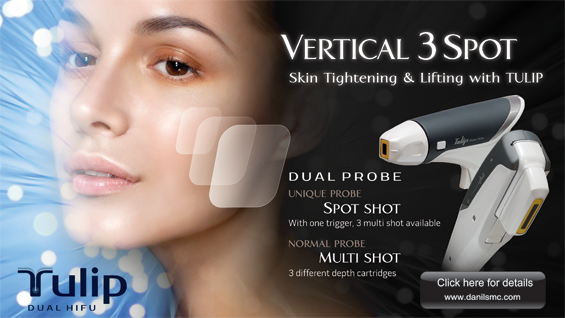Caution in compression therapy
1. Consideration of individual patient characteristics
It is important to clearly identify patient characteristics such as age, physical conditions, musculoskeletal and joint health, lesion location, presence of venous or lymphatic disease, and arterial blood flow, etc. Especially, if ABI is 70% or less, chronic ischemia such as diabetic foot is suspected and compression therapy should be avoided.
Table 4. Ankle-Brachial Index(ABI)
ABI= ankle systolic pressure/brachial systolic pressure
Recorded in supine position
ABI > 1.0 normal
ABI 0.9~1.0 minimal arterial occlusive dis
ABI 0.5~0.9 claudication level
ABI < 0.5 ischemic rest pain, severe occlusive arterial dis
ABI<0.3 trophic change
2. Management of compression bandage
Bandages should be undone every night before going to bed and if there is a wound, it should be sterilized and applied with ointment, etc. Compression bandages are reapplied in the morning. In case of using disposable adhesive bandages, clearly communicate to the patient the risk of blood flow disturbance due to long-term use. Wrongfully applied compression bandages do not improve blood flow but disturb the blood flow and exacerbate edema. If the patient is young with a high level of activity, applying multiple layers of inelastic bandage can be more effective. In an older, postsurgical or postnatal patient, applying a single layer of elastic bandage can be more beneficial.
Lastly, inelastic bandages should be applied in multiple layers in patients with severe edema.
3. Bandaging technique
Apply the bandage from the foot to the hollow of the knee, with the strongest pressure around the ankle and weaken the pull as you go up the leg (graduated compression).
Figure of eight wrapping is mainly used for the ankle and spiral wrapping is used from the ankle to hollow of the knee or thigh. Do not layer the excess bandage remaining after wrapping the desired area as it can cause Tourniquet effect. Cut and discard the remaining bandage.
Principles
- Do not pull the bandage to over 50% of the original length.
- To prevent the slipping of the bandage, apply rough textured elastic gauze before wrapping elastic bandage.
- Overlap 50-70% of the bandage after the first wrap to avoid skin pinching.
- Wrap the bandage in a diagonal angle to minimize skin constriction.
- Applying multiple layers of bandage increases the compression.
- Apply graduated compression. In other words, apply the strongest compression to the foot and gradually weaken the pull as you go up toward the knee.
4. Indications for compression grades
Grade I(<25mmHg at ankle) compression
- incipient varicosity; mild edema; maternity care; postoperative prophylactic measurement; postsclerotherapy
* Grade I bandage may be applied by the patient oneself
Grade II(25~35mmHg) compression
- advanced varicosity ; moderate edema; follow-up care of major varicose vein surgery
* Grade II compression is usually adequate for the most of venous patients
Grade III(35~45mmHg) compression
- limited to postphlebitic syndrome; sequelae of DVT(e.g. healed ulcer); moderate lymphedema * DVT: Deep Vein Thrombosis
Grade IV(>45mmHg) compression – Severe lymphedema; elephantiasis
Grade II or higher bandage should not be applied by the patient and only qualified healthcare personnel should.
I. CVI without varicose veins but isolated symptoms only
- Without reflux on SVS*: low Grade I(10mmHg) compression
- With reflux on SVS: low Grade I(10~15mmHg) compression
II. CVI without various veins but with telangiectasis or venules
- Without reflux on SVS: medium Grade I(15~20mmHg)
compression after microsclerosis
- With reflux on SVS: high Grade I(20~25mmHg) compression
after microsclerosis: high risk of recurrence
* CVI: Chronic Venous Insufficiency SVS: Superficial Venous System
III. CVI with truncular varicosity: Grade II (25-35 mmHg) compression after the stripping and/or phlebectomy and/or sclerosis, depending upon the involvement of long or short saphenous vein or intact saphenous vein
IV. CVI with trophical lesion
- V.V.(-) but DVS* reflux(+): low Grade II(25~30mmHg) compression with/without DVS surgery
- V.V.(+) but DVS reflux(-): high Grade II(30~35mmHg) compression with DVS surgery
- V.V.(+) and DVS reflux(+): Grade III(35~45mmHg) compression with DVS surgery and treatment of V.V.
* V.V. : Varicous Vein DVS: Deep Vein System CVI: Chronic Venous Insufficiency
[Advertisement] Tulip(Skin Tightening & Lifting) – Manufacturer: DANIL SMC(www.danilsmc.com)
5. Pads in compression therapy
Pads can be used to increase or decrease compression in certain areas.
a. Pads can be made from various materials
- Hydrophilic material (e.g. cotton): improper material for the skin with discharge, since it soaks up fluid and loses its padding effect
- Hydrophobic material (e.g. latex): can maintain constant volume in the presence of discharge to maintain constant local tension
b. The diameter of the wrapped bandage decreases around the pad and this increases local pressure (eccentric compression).
-To be continued-





















